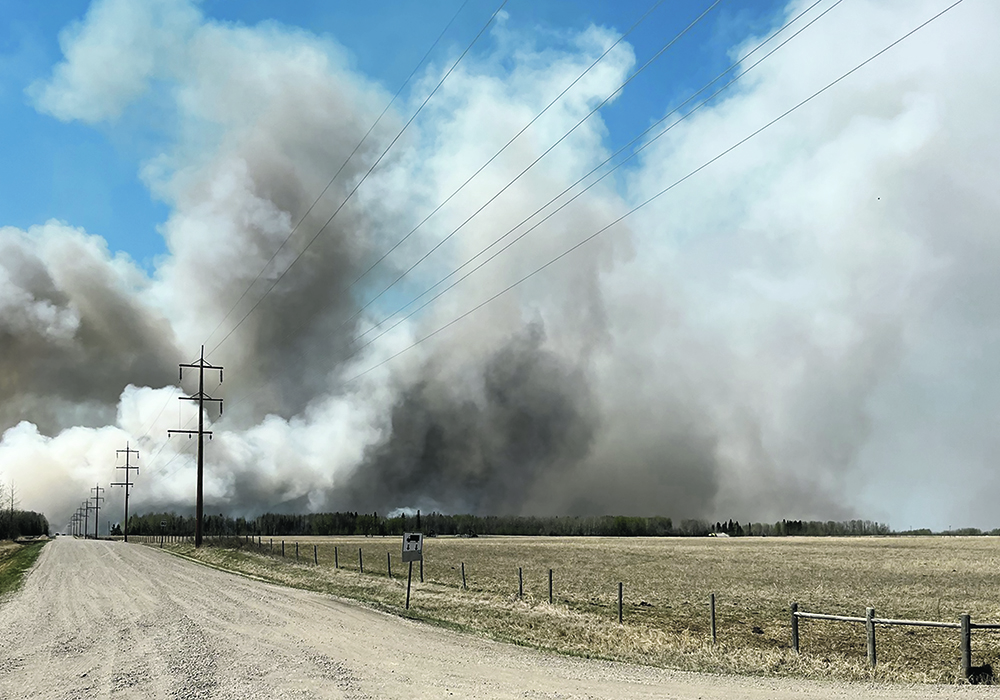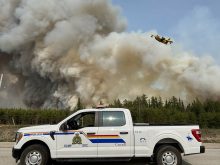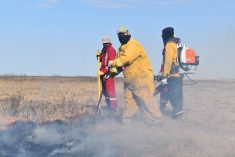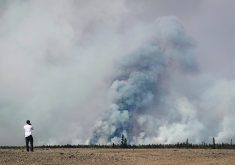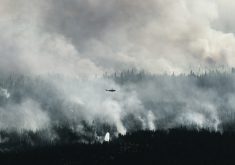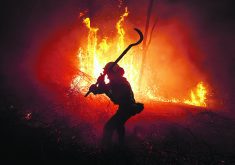A silver lining from persistent drought is that there is little vegetation left to burn as dry, windy conditions persist
Persistent dry conditions are posing different fire threat levels for Alberta’s rural firefighters, from an extreme threat in the north, to diminished in southern parts because of lack of material to burn.
“Looking out my window, we have no snow,” said fire chief Wayne Brown of the Municipal District of Greenview in early December.
The MD of Greenview sits on the south end of Alberta’s Peace Country and includes mixed farm operations along its eastern side with its western portion made up of the heavily forested Eastern Slopes region of the Rocky Mountains.
Read Also

Why feds imposed EV tariffs
Moe and Kinew have a fight on their hands when it comes to eliminating the EV tariff. Canada has to worry about pissing off the U.S. and Mexico and hundreds of thousands of auto workers.
The area was rocked by fires last spring and was the centre of one of the worst fire seasons in Alberta’s history.
So far this winter, conditions aren’t looking favourable for relief from the fire risk, according to Brown.
November is usually when farmers in the aregion burn cleared brush piles because typically there is snow.
“We’ve had some issues with brush piles. We did have one in Debolt that did get away from the farmer and turned into a wildfire that we did extinguish,” said Brown. “People have to realize with the warming conditions worldwide — I’m not an expert on the environmental side but I did see the effects of it this past summer — they have to be cognizant of the fact that without snow on the ground, these type of fires can get away from them.”
Brown said his department plans to prepare for the possibility that conditions similar to those seen in spring 2023 will return in 2024, although, he doesn’t believe next season will match this one’s destructive force.
“I can’t imagine that we’re going to get something like what we had, only speaking for the MD of Greenview, with seven significant wildfires during that May, June stretch,” he said.
Farmers and ranchers should review the provincial FireSmart framework to ensure they are aware of tips to help fireproof their operations, discuss the situations with their local fire departments regarding preparations and ensure an evacuation plan is in place, said Brown.
“Once we do get these types of situations with large wildfires, they can spread rapidly and strong winds can push them very quickly — just giving it more thought than one would in the past,” he said. “I think it’s critically important now, given the risks that we have in today’s wildfire environment.”
The dry conditions led to an uncharacteristic December grassfire in Rocky View County which surrounds Calgary on its western, northern and eastern city limits.
Rocky View fire chief Ken Hubbard said the fire was caused by a downed power line that sparked the blaze in tall grass.
“The grass had been allowed to grow so there was a lot of standing grass in the area affected,” he said, adding winds at the time were gusting up to 70 kilometres per hour. “It picked up steam and ended up a large fire that spread rapidly.”
No significant losses were reported because of the fire and the area has seen snowfall since, but Hubbard said the county had a fire ban in place from early March to July.
He said he’s hoping the recent snowfall sticks but, if it doesn’t, there’s the possibility of further fires come January.
“If we have those periods where we lose the moisture, we have some dry grass with the winds blowing through, the cold doesn’t really change the effects of the drying out of materials. We still have that risk of running grassfires,” Hubbard said, highlighting 90 percent of fires are human caused.
As for the open prairie part of south-central Alberta, it’s dry but there simply isn’t any material to burn, according to Special Areas fire chief Rob Palmer.
“There was no moisture to grow any grass in any of the pastures,” said Palmer of the 2023 fire season, adding as long as temperatures remain low and humidity levels high over the winter, the risk will be minimal.
The early spring could see that situation elevate but the current state of the range doesn’t appear to be able to support a large fire.
“We’ve had a lot of ditch fires that stop at the fence line this year because there is no material in the pastures to burn,” said Palmer.
Like Palmer, Cypress County fire chief Jason Linton said the prairie just doesn’t have much fire load to burn.
But the department is looking at how to better manage wildfires in the future while taking advantage of the lull to enhance training opportunities.
“This is the driest we’ve ever seen it, the most extreme but there was no fuel growth,” said Linton. “So, the fires we did have almost put themselves out just because there wasn’t the fuel load around to have the fire spread.”
Linton said Cypress County firefighters were deployed to areas in northern Alberta this spring to help with its situation and work continues to better co-ordinate such situations with the provincial and federal governments.
As of the official end of the 2023 fire season on Nov. 1, more than 1,000 fires were recorded with nearly five million acres of land burned across Alberta.


